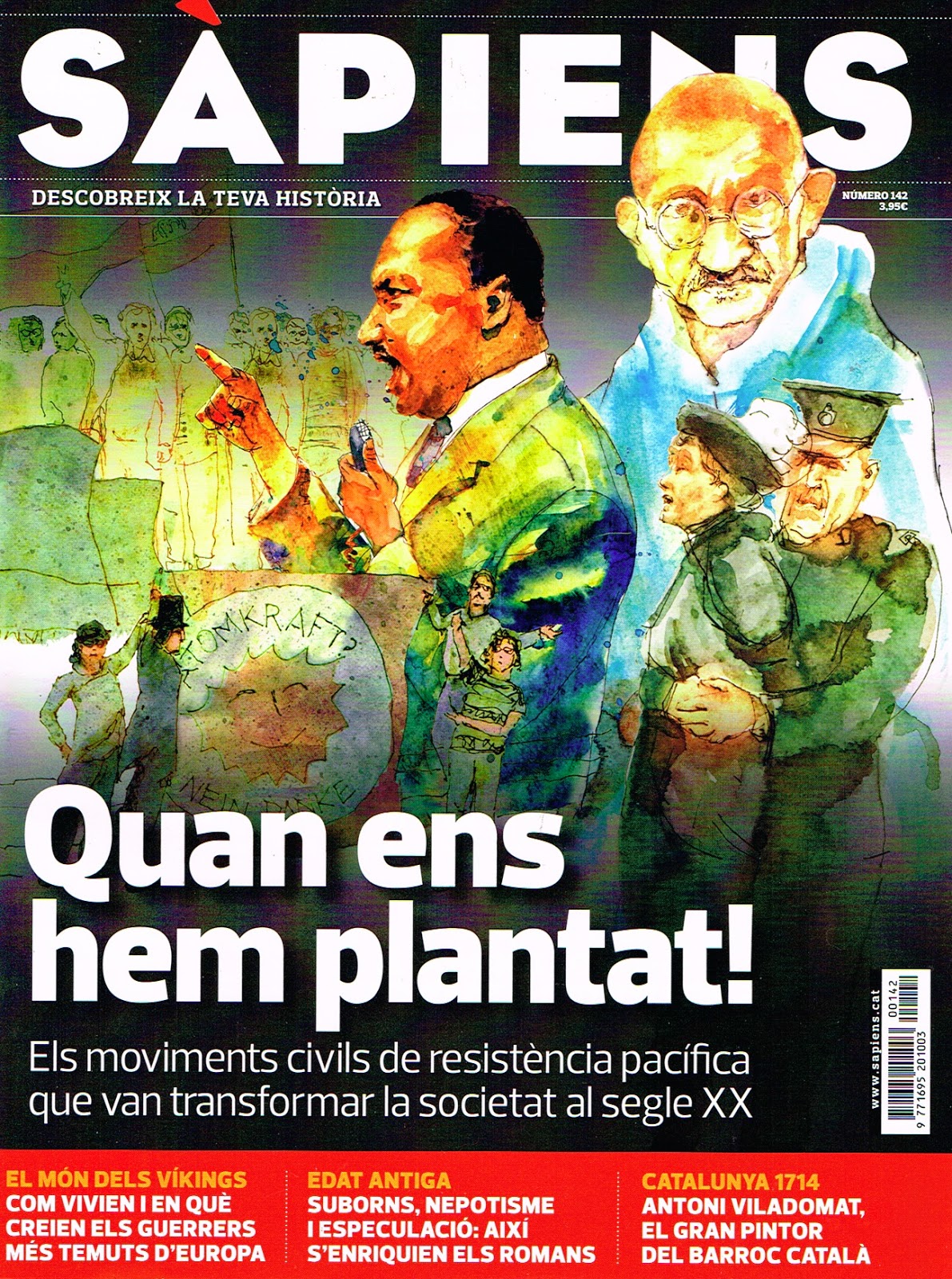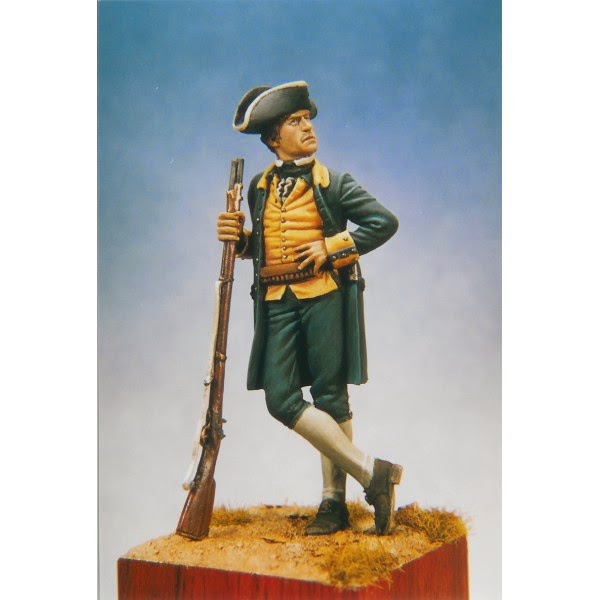 A
A.
Let’s continue now to reconstruct the uniforms for soldados de
cuera as established by the Royal Regulation of 1772 with a look at the chupa corta. Again, the regulation reads:
1. El vestuario de los soldados de presidio ha de ser uniforme en
todos, y constará de una chupa corta de tripe, ó paño azul, con una pequeña
vuelta y collarin encarnado. . . [1]
My translation is:
1. The clothing of the soldiers of the presidio will be completely uniform,
and consist of a
short, sleeved waiscoat of blue wool velvet or cloth, with a small
scarlet cuff and collar. .
I translate chupa as
“sleeved waistcoat.” A chupa corta,
then, would be a “short, sleeved waistcoat,” of course. Others have translated chupa corta as “jacket” or “coat” and, because clothing terms can
be both vague and fluid, these are not really wrong, though there are other
Spanish words for these garments.[2] But the Academia
Usual dictionary of the Spanish language, published in 1780 (the closest in
date I can find to the publication of the 1772 Regulation), defines chupa as “Parte del vestido, que cubre el tronco del cuerpo con quatro faldillas
de la cintura abaxo y con mangas ajustas á los brazos: en el vestido de militar
se pone debaxo de la casaca.”[3] That is, “Piece of clothing that covers the
torso, with four skirts from the waist downward and with sleeves fitted to the
arms. In military dress, it is worn
below the coat.”
 B
B.
Like most of the rest of Europe, by 1700 the sleeved
waistcoat/chupa was already a standard piece of men’s clothing for civilians
and soldiers in Spain and her New World colonies. Middle and upper class men wore them not only
beneath the coat (in Spanish, casaca)
but also alone as informal dress at home and for such vigorous activities as
hunting. Most Spanish soldiers followed
a similar pattern of coats and sleeved waistcoats for dress occaisions and the
waistcoat alone for fatigue and off duty wear. Working men, whether they were
tradesmen, craftsmen, farmers, sailors or whatever, found the chupa comfortable
and practical for every purpose and seldom or never wore coats at all. [4]
 C
C.
At the beginning of the 18th century, the
chupa/waistcoat’s tails reached nearly to the knees, but fashion
dictated ever shorter tails until, by 1760, they came just below the hips. Ten years later, some men were wearing them
shorter still and this is probably why the 1772 Royal Regulations specified a
“short, sleeved waistcoat,” (chupa corta).
 D
D.
In New Spain (Mexico), the chupa became an essential part of the
national costume. There were those who wore European fashions, including gentlemen in the government and higher professions, and also most
soldiers. But the middle and lower
classes created a style of men’s dress that consisted of the chupa, breeches
and a flat-brimmed sombrero that can be seen as the ancestor of today’s charro
clothing.[5]
Because this style of dress was so well suited to life spent in a
hot climate and often on horseback, the vaqueros (cowboys), from whom most of the
rural and provincial cavalry were recruited, made it their own. Thus their uniforms, including those of the soldados
de cuera, were, in fact, mostly a militarized form of vaquero clothing.[6]
 E
E.
In later posts, I’ll continue this description of the soldado de cueras' chupa corta
with a look at its cut, fabrics, facings, buttons and other details.
Illustrations:
A. Spanish Army chupa corta, 1787 [See B. below)
B. Uniform for a proposed Havana infantry regiment to be raised by
Don José Fleming, 1787 - AGI Uniformes 54 – Anne S. K. Brown Collection, Brown
University.
C. Cazador cargando su escopeta [Hunter Loading his Musket], 1775, by Francisco
de Goya y Lucientes, Museo Nacional del Prado
D. These two casta paintings
are part of a set meant to display the different classes, races and costumes of
New Spain. Note that the man on the
right wears a longer chupa, while the man on the left has a shorter chupa
corta. Anonymous, c. 1780. Private collection. (Katzew 1996)
E. Detail of a uniform proposal for the Regimiento Provincial de
Caballeria del Principe, c. 1771-1779. Real
Academia de Historia, Madrid. The authors of the Royal Regulations of 1771 probably had something much like this uniform and equipment in mind for the soldados de cuera.
Notes
[1] Sidney Brinckerhoff and Odie B. Faulk,
Lancers for the King; A Study of the Frontier
Military System of Northern New Spain, with a
Translation of the Royal Regulations of 1772. Phoenix: Arizona Historical Society,1965, p. 18.
[2] That is, chaqueta and casaca.
[3] “Nuevo Tesoro Lexicográfico de la
Lengua Española,” is an invaluable resource of the Real Academia de España,
containing scanned, searchable Spanish dictionaries from 1495 to the
present. Here is the link: http://ntlle.rae.es/ntlle/SrvltGUISalirNtlle
[4] For a description of the sleeved
waistcoat and its evolution in Europe from the early to mid18th century, see
Aileen Ribeiro, Dress in
Eighteenth-Century Europe 1715-1789. New Haven and London: Yale University
Press, 2002, pp. 20, 121-122. My views on its use by the various classes and
occupations of Spain and her American colonies are based on written and
pictorial evidence. See note 5,
below.
[5] After more than forty years of
research, I’ve never encountered what I consider a proper history of Mexico’s
“national costume” during the Spanish Era.
Most of what I know is based on eyewitness written and pictorial
sources. Of particular value are the casta paintings. See especially Ilona Katzew, et al, New World Orders; Casta Painting and
Colonial Latin America. New York: Americas Society, 1979 and Ilona Katzew, Casta Painting; Images of Race in Eighteenth-Century
Mexico. New Haven and London: Yale University Press, 2004.
[6] The Jesuit father, Ignaz
Pfefferkorn, wrote in his memoir of life in northern Mexico and southern
Arizona in the 1750s and 1760s, “Through oft-repeated roundups, Sonora Spaniards
grow hardened to the most severe fatigue and become such expert horsemen that
the proudest and most spirited horse cannot throw them. Resistance to fatigue
and expert horsemanship are the two qualities which cause Spaniards born and
raised in Sonora to be considered most able for Sonora military service, and
hence no others are accepted as soldiers.” A
Description of the Province of Sonora. Translated and annotated by Theodore
E. Treutlin. Albuquerque: University of New Mexico Press, 1949, p. 290.
![]()










